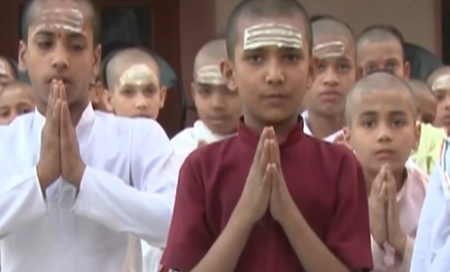Copyright Salt Lake City Deseret News

It’s just about time to turn our clocks back an hour. Daylight saving time ends on Sunday, Nov. 2. Will we stop turning our clocks anytime soon? As of now, daylight saving time is still federally mandated by the U.S. government. States currently have the ability to opt for permanent standard time — both Arizona and Hawaii do this — but ongoing efforts aim to make constant daylight saving time an option. Several U.S. states, including Utah, have passed bills seeking to establish year-round daylight saving time, but action is required on the federal level to make any changes possible — and efforts to squash the practice are getting blocked by Congress. On Tuesday, a bipartisan bill that would provide states with the power to opt for permanent daylight saving time was thwarted by Congress, per The Hill, setting the sun on hopes for making daylight saving permanent anytime soon. Still, the majority of U.S. adults (54%) say they are ready to quash the twice-yearly practice of changing the clock, per a recent Gallup poll. On the flip side, 40% of Americans are in favor of continuing the practice, while another 6% remains undecided on the issue. Support for changing the clocks has decreased dramatically over the past three decades. In 1990, 74% of Americans favored the practice, reports Gallup. Until the federally-mandated Uniform Time Act is repealed or a new federal law is passed, expect to change your clocks again in 2026. Why do we have daylight saving time? A brief history Daylight saving time went into effect in the U.S. for the first time in March 1918 in an effort to save fuel as the country entered World War I, per Time. But notable benefits of the time change had little to do with energy conservation. “Golf ball sales skyrocketed during Daylight Saving Time. ... Baseball is a huge early supporter, too, because there’s no artificial illumination of parks, so to get school kids and workers to ball games with the extended daylight, they have a later start time,” according to Michael Downing, author of “Spring Forward: The Annual Madness of Daylight Saving Time,” per Time. Farmers actually opposed daylight saving time and rallied against it, per The American Farm Bureau Federation. Since farmers start work before the sunrise all year, the time change does not impact when they get up to milk cows, collect eggs and harvest crops. But the time shift made it challenging for farmers to get their harvest to markets on time. Due to opposition from farmers, daylight saving time was taken out of practice. Then, during World War II, daylight saving time was enacted again, but New York City and other areas chose not to follow what became known as “war time,” per Time. Confusion followed. There were “cities observing daylight saving time surrounded by rural areas that are not, and no one can tell what time it is anywhere,” Downing said. The confusion pushed President Lyndon B. Johnson to enact the Uniform Time Act in 1966, which established standard times across the country. Daylight saving time made a brief comeback during the 1970s, seeking to conserve fuel amid the energy crisis, per CNN. President Richard Nixon signed year-round daylight saving time into law in January 1974, but that summer Congress voted to return to standard time, The New York Times reported in 1974. In 1986, the U.S. returned to daylight saving time for seven months every year, per Time. Then in 2005, daylight saving time was extended to eight months a year, and it’s stayed that way since. Which states have gotten rid of daylight saving time? The only U.S. states which do not observe daylight saving time are Hawaii and Arizona, though the Navajo Nation in northern Arizona does follow daylight saving time, per Live Science. U.S. territories Guam, American Samoa, Puerto Rico, Northern Mariana Islands and the U.S. Virgin Islands do not practice daylight saving time. The Uniform Time Act allows states to opt for standard time year-round, but blocks states from making daylight saving time permanent. In recent years, 19 states have passed legislation supporting year-round daylight saving time, but none of those laws can take effect until Congress passes federal legislation allowing changes to be implemented. States across the West, including Utah, Idaho, Wyoming, Colorado, Montana, Oregon, Washington and Texas, have all enacted legislation to make daylight saving time permanent and are waiting on approval from the federal level, per Axios. In total, 35 states have considered solutions connected to daylight saving time this year, a fraction of which are related to permanent standard time, according to the National Conference of State Legislatures. Several pieces of legislation have been introduced in Congress, but have always stalled out. In 2018, U.S. Sen. Marco Rubio introduced “The Sunshine Protection Act,” which would keep the entire country on daylight saving time year-round. Some potential benefits of the bill noted by Rubio include: Reduced risk of seasonal depression Fewer robberies Benefits to the agricultural world Reduced energy use



